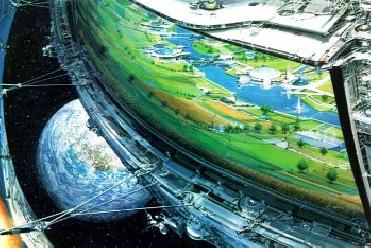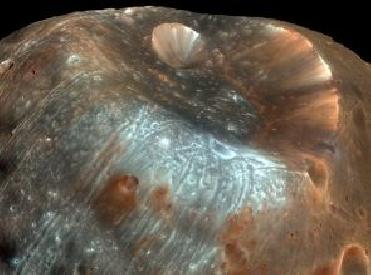
By Suman Chowdhury
In common parlance, a space colony is a large, self-contained, artificial environment in space which is the enduring home of an entire community. It is therefore an autonomous human habitation of locations outside the Earth.
Stephen Hawking, one of the UK's most famous academics, once said that humanity is less threatened by conventional and nuclear warfare than developments in biology. The only safeguard would be to set up human colonies in space. Therefore, instead of settling on alien planets, it may be easier to construct vast artificial habitats in space.
There are several prominent reasons for space colonisation: security, profits, population growth, energy and raw materials. The first and foremost reason is to ensure the survival of human race from grave issues such as environmental change, climate change, or threats from near-Earth objects such as asteroids. Energy is also one of the prime considerations. The most abundant and readily available energy source for colonies is solar. It can be harnessed using huge solar power stations in space. Space has most of the same raw materials found on Earth, and large amounts of energy. It should be possible to make profits, if the infrastructure for space mining and space manufacturing can be created. Thus, space colonies could become the industrial heartlands of the future. The colonists would mine the other worlds of our solar system and build spacecraft and beamed power satellites that will supplement or even replace power plants on the Earth.
In addition to potentially replacing our current Earth-polluting industries, these colonies may also help our environment in other ways. Since the colonists would create miniature biospheres to live in, they will refine our knowledge of the Earth's biosphere. But other than such advantages space colonies must solve a number of problems in order to maintain healthy normal human populations, such as, internal life support systems, protection from hostile external environment and transportation and maneuvering.
The possibility of space colonies gained momentum in the 60s and 70s. One of the most prominent thinkers Gerard O’Neill, a Princeton Physicist, investigated several proposed space colony designs and finally NASA came up with three primary designs, dubbed Island One, Island Two, and Island Three. All three are based on the premise of a self-sustaining, artificial ecology within the station, called an arcology.
Island One was the Bernal sphere, an enclosed design (good for protecting against radiation), excepting the poles, which would be left open to allow mirrors to redirect sunlight from the outside to the interior of the colony. Island Two was the Stanford torus, a mile-wide torus spinning to produce artificial gravity on the inner side of the ring. The center of the torus could then serve as a convenient docking station for spacecraft approaching via the poles. Island Three was the O'Neill cylinder, a spinning tube designed to hold 10,000 people.
How will space colonies be built? According to NASA, all the necessary materials for space colonisation are available from the Moon and near-Earth objects, and that solar energy is plentiful in space. No fundamental scientific breakthroughs will be required to build space colonies. The two largest obstacles in building space colonies today are the health risks of microgravity and high launch costs.
Will Space Tourism drive Space Colonisation? In April of 2001, Dennis Tito, an American, became the first fare-paying Space Tourist at a cost of $20 million. He flew to the International Space Station and remained for 7 days. In late 2009, Virgin Galactic hopes to start daily trips for paying customers, into Space aboard their Space Ship Two. The return flights into low Earth orbit will last just over two hours at a cost of $100 000 per traveler; five minutes of weightlessness included. This may be the beginning for setting up colonies in space.
Construction of space settlements may be relatively expensive initially, but in the long run, it would be the stepping stone for vast leap in space. And therefore the eventual result could be the colonisation of the entire universe.
- Courtesy: NASA.
 Previous Article
Previous Article Next Article
Next Article













The Indian Air Force, in its flight trials evaluation report submitted before the Defence Ministry l..
view articleAn insight into the Medium Multi-Role Combat Aircraft competition...
view articleSky enthusiasts can now spot the International Space Station (ISS) commanded by Indian-American astr..
view article